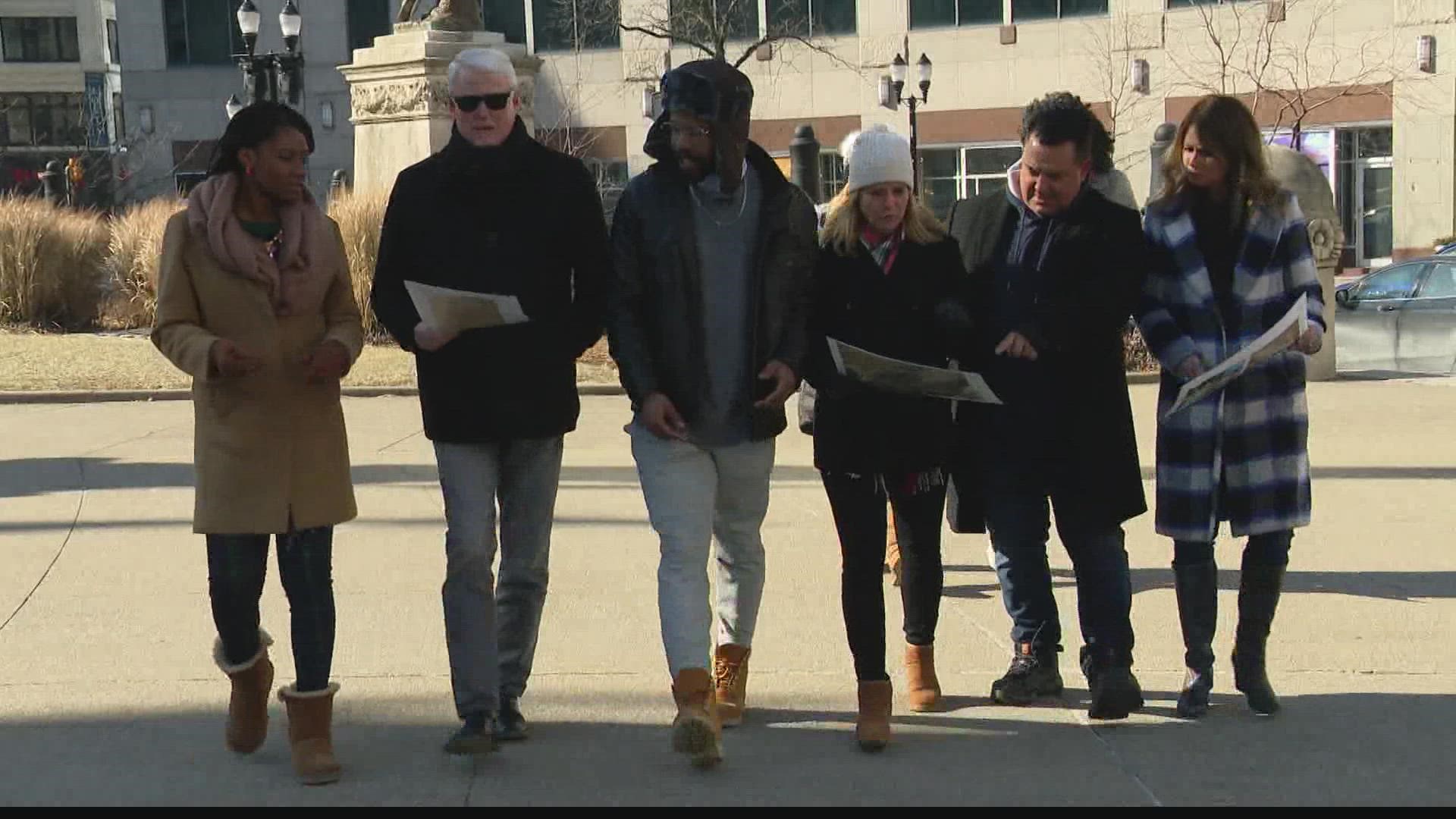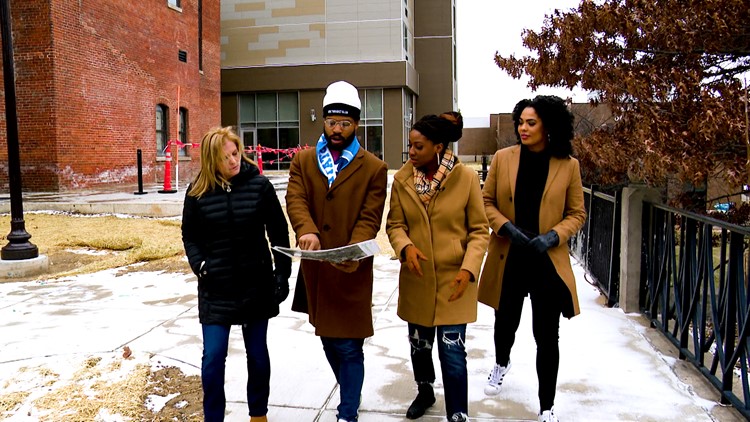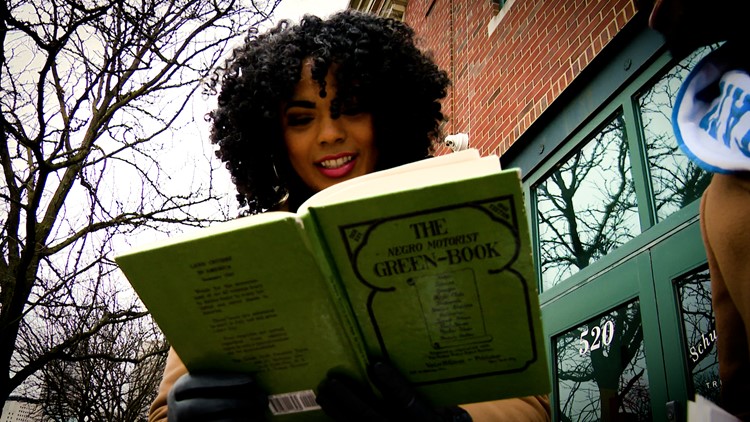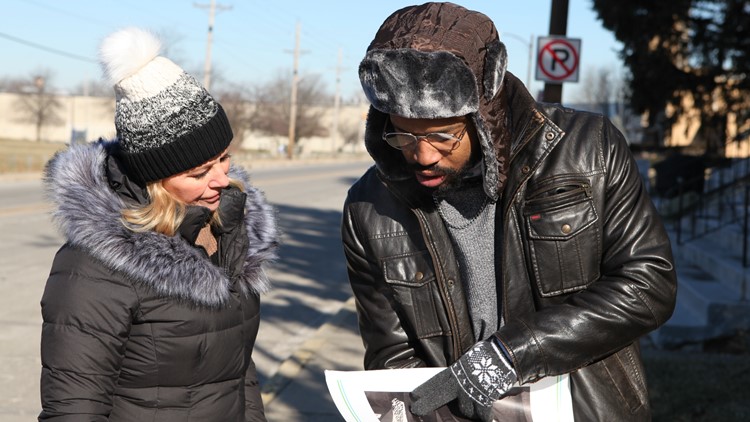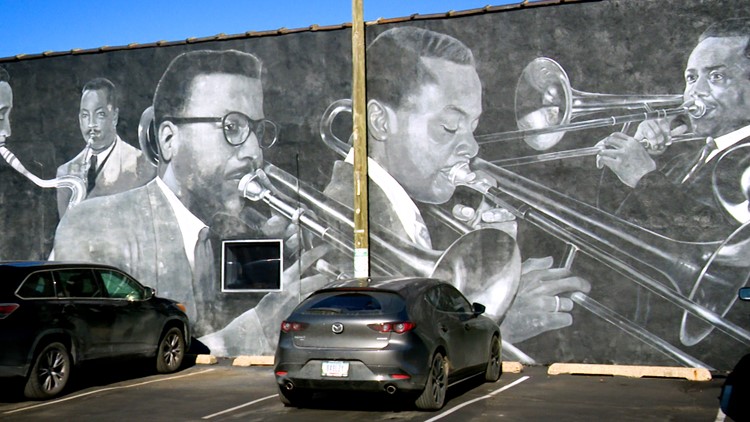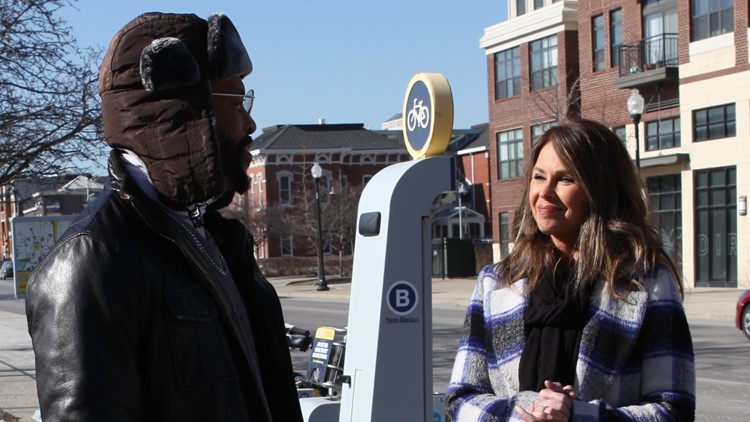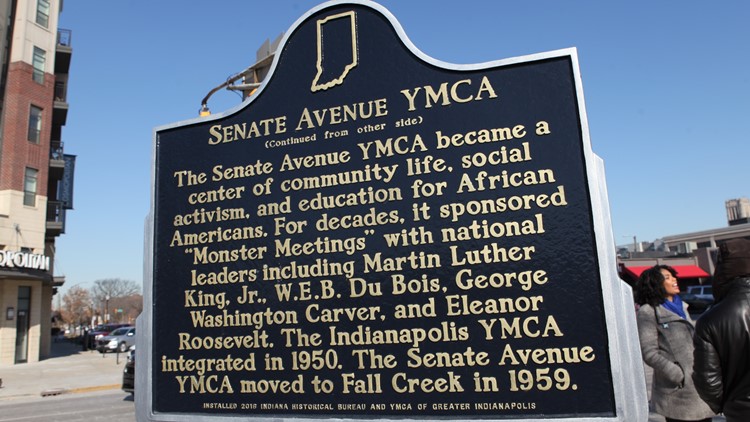INDIANAPOLIS — This year, WTHR is recognizing Black History Month by celebrating the diversity in our city — informing, inspiring and impacting the public in a positive way.
Indianapolis is full of Black history, and people unknowingly walk by it every day. Our 13News anchors joined tour guide Sampson Levingston of Through2Eyes Indiana. He leads walk and talk tours around Indianapolis to learn more about the Circle City's often untold Black history.
Jalea Brooks, Angela Buchman, Carlos Diaz, Felicia Lawrence, Chuck Lofton, Julia Moffitt, Anne Marie Tiernon and Scott Swan visited eight historic sites around Indianapolis:
- St. Rita Catholic Church
- St. John's Missionary Baptist Church
- Jazz Masters Mural
- Bethel A.M.E. Church
- Ransom Place neighborhood
- 500 block of Indiana Avenue
- Lockefield Gardens
- Senate Avenue YMCA
Throughout the month, our crew will share what they've learned after walking the historic tours with Levingston. Be on the lookout for their individual reflections as these stories air during February, and check back here for summaries of each of the historic sites.
Indianapolis Black history tour
St. Rita Catholic Church
"My trip on WTHR's Black History Month tour took Anne Marie Tiernon and I to the historic St. Rita Catholic Church on Dr. Andrew J. Brown Avenue. I had driven past this beautiful church for years but didn't know its history and importance to the city's black community.
Our tour guide, Sampson Levingston, said that in 1919, the church — an extension of St. Bridget's Catholic Church — began meeting in a Knights Of Columbus chapel and after a series of changes, moved into its present location in 1958.
Through the years, the church has been the home of a school and weekly dances that drew hundreds.
Even though the area has changed, the church continues. It still offers weekly worship services, but through the leadership of Parish Life Coordinator Sister Gail Trippett. It also offers other outreach ministries from classes on breaking the poverty cycle to helping its attendees through the St. Vincent DePaul Society."
Read Chuck's full reflection on his time on the tour here.
St. John's Missionary Baptist Church
"If you know me, you know I am a bit of a history buff. I met Sampson at St. John's Missionary Baptist Church to learn about its history, and one of the most famous black pastors, Dr. Andrew J. Brown.
Reverend Brown did not start the church, but certainly was critical in expanding the congregation and solidifying it as one of the leading Black churches in segregated Indianapolis. Reverend Brown had such an impact on this area of the city and it's black community, the street the former and current church borders is named Dr. Andrew J. Brown Avenue.
Rev. Brown is also the founder of Indiana Black Expo, which is still thriving in Indianapolis to this day.
Rev. Brown marched for civil rights in the 1950s and '60s, and in 1963, marched with his friend Dr. Martin Luther King Jr. in Selma, Alabama. In fact, he was at King's parents' home the night the civil rights leader was assassinated in April 1968."
Read Julia's full reflection on his time on the tour here.
Indiana Avenue Jazz Masters Mural
"One of the many things that I loved about this look into the history of our great city is that we were given the opportunity to choose which part of Indianapolis we wanted to know more about. So I jumped at the chance to learn about the history of the Indiana Avenue Jazz Masters Mural.
As a first generation American, I grew up with Latin Jazz being played in our home every Sunday afternoon. So this was like revisiting that musical neighborhood, just going down a different beautiful street.
Our tour guide Sampson (who is awesome, by the way) listed the names of the Jazz legends on the mural for me: David Young, Jimmy Coe, David Baker, JJ Johnson, Slide Hampton, Freddie Hubbard, Larry Ridley and Wes Montgomery. All of these artists are linked to the Indy Jazz scene in the 1950s and 1960s.
Now, don’t feel bad if you’ve never noticed the Indiana Avenue Jazz Masters Mural. First off, it hasn’t been around since the 1960s. Secondly, the mural is facing the 'wrong way' on Capitol Ave. The mural is on the south side of the 75-year-old Musicians Repair & Sales building. Well, Capitol Avenue is a one-way street heading south. Because I'm looking south as I keep my eyes on the road, I've never turned around to see this amazing mural that I pass by every day!"
Read Carlos' full reflection on his time on the tour here.
Bethel A.M.E. Church
"The Bethel A.M.E. Church is a historic African Methodist Episcopal church on Vermont Street. Its front doors sit adjacent to the canal, which was built around the same time as the church. Organized in 1836, the story of Bethel A.M.E. is certainly engraved in the early history of Indianapolis.
It's famously known as the church home of the trailblazing entrepreneur, Madam C.J. Walker. But well before that, its steeple was a welcoming beacon of light to passengers on the Underground Railroad. The congregation housed freedom-seekers traveling to and through Indianapolis, fleeing slavery.
You'd typically pass the church as you travel on nearby North West Street. However, the church is now surrounded on almost all sides, by a Hampton Inn and Homewood Suites hotel.
The congregation itself has since relocated decades ago. However, Bethel A.M.E. Church's exterior is now preserved and listed on the National Register of Historic Places."
Read Jalea's full reflection on his time on the tour here.
Ransom Place neighborhood
"Our tour with Sampson Levingston of Through2Eyes included walking the streets of Ransom Place, a historic neighborhood approximately six blocks near the IUPUI campus northwest of Monument Circle.
The neighborhood, which was first established in 1897, is named after Freeman Ransom, an attorney for Madame C.J. Walker and her company. Walker is touted as the first female self-made millionaire, who made and sold hair care products for the Black community.
In its heyday, Ransom Place had a church, a general store and was an easy walk to Crispus Attacks High School. It was listed in the National Register of Historic Places in 1992 for its significance in the legacy of the African American community.
Thank you, Sampson, for helping me learn about the history of this neighborhood that is just blocks away from my work home WTHR!"
Read Anne Marie's full reflection on his time on the tour here.
500 block of Indiana Avenue
"Our Black History Month walking tour with Sampson Levingston took us to the 500 block of Indiana Avenue, highlighting specific locations found in The Green Book.
The Green Book, published from 1936-1967 provides a list of locations that were safe and provided services for African Americans traveling throughout the United States.
In this book, we found several black-owned businesses in the 500 block of Indiana Avenue that are noted as being a place for people of color to go and safely receive goods and services. From restaurants and hotels, to theaters and jazz clubs, you could find it all on Indiana Avenue!
And with this area serving as a central business district for Indy's African American community, it also became a central gathering place. Before Facebook, Instagram, and Twitter, there was Indiana Avenue. That's where you went to be seen and connect with others.
Every day, Black history is all around us. History is right here in our community, right here in our backyard — only if you slow down enough to look."
Read Felicia's full reflection on his time on the tour here.
Lockefield Gardens
Recently, tour guide Sampson Levingston took me to one of the most interesting places in Indianapolis basketball history: Lockefield Gardens.
Sampson talked about the hoops culture that existed in this Black neighborhood. He discussed the days of a dusty basketball court that existed in the 1940s, when Lockefield Gardens was the first segregated housing development in Indianapolis.
The "Dust Bowl" was a familiar court for Indiana legends like Oscar Robertson and Bill Garrett. Sampson told me NBA players would often play against players from the neighborhood.
As Sampson described it, basketball is the universal language in Indiana. If you can play, you can play — even on a dusty basketball court.
Read Scott's full reflection on his time on the tour here.
Senate Avenue YMCA
"On the one of the coldest days this winter, we joined Sampson Levingston on a walking tour for Black History Month. My location on our tour was the Senate Avenue YMCA. It became a branch of the YMCA in 1910 and was one of the largest black YMCAs in the country.
This YMCA was a center for the Black community to get together and learn from each other and grow. What stood out to me were the "Monster Meetings" that brought leaders from the community and around the nation to Indianapolis to speak.
Martin Luther King Jr. and Eleanor Roosevelt were just a couple that came to speak.
I was moved by the tour — moved to learn more and to bring my family downtown to learn too."
Read Angela's full reflection on his time on the tour here.
Check out the Near Me feature on WTHR.com and the WTHR news app to find stories on each of these historic sites.

